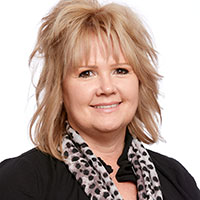COR Values
Changes to the Certificate of Recognition (COR) have improved the program, and the ACSA is working to ensure its members stay ahead of the curve
by Steve Macleod

Alberta’s auditor general identified a significant gap in the Certificate of Recognition (COR) program back in April 2010. Merwan Saher’s spring report noted that: “Half of those employers that persistently fail to comply with the OHS [Occupational Health and Safety] Act also continue to hold a valid Certificate of Recognition (COR), and continue to have elevated injury rates among their workers.”
The auditor general made two recommendations to Alberta Labour in his report to help solve the problem: obtaining assurance on work done by COR auditors, and consistently following up on recommendations made to certifying partners.
– Lauren Welsh, Alberta Labour public affairs officer
Saher’s July 2016 report built on that assessment and still included recommendations for Alberta Labour to improve enforcement of the OHS Act, but he had a more positive take on COR this time around. The report noted that both COR recommendations had been adopted, and “as a group, COR holders had a 35.8 per cent lower loss ratio than non-COR holders, as measured by WCB.”
This was not the first time changes had been made to the COR program, and it likely will not be the last. Although a review of the province’s health and safety programs has not begun yet, it is a task the Alberta government plans to undertake.
“In some cases, Alberta’s labour legislation has not been reviewed in decades. These laws need to reflect today’s workplaces,” notes Alberta Labour public affairs officer Lauren Welsh in an email. “The goal of these reviews is to find ways we can work together to modernize and renew Alberta’s labour legislation for the 21st century, and no specific changes to any programs are being proposed at this time.”
Although COR is a voluntary program, it’s becoming more and more of an unspoken requirement of doing business. “The COR program has become an element of almost any pre-qualification program. It’s a necessary part of business,” explains David Myrol, a partner with law firm McLennan Ross LLP. “In my view, the original purpose of the program has shifted from making worksites safer, to a business requirement.”
Myrol spent nine years as an OHS prosecutor for the Alberta government when COR was first established. Now, he defends companies being prosecuted under the OHS Act and says that, if a review does happen, the auditing process is one aspect that could use updating.
“We’ve heard a lot about auditing in other industries like banking and financial services with the Sarbanes-Oxley Act,” Myrol says, referring to the 2002 bill passed by the United States Congress protecting investors from the possibility of corporations’ fraudulent accounting. “The important auditing learnings from the financial sector are not being applied in the safety world, and in particular, the COR program.”
There are eight mandatory elements to the COR program legislated by OHS. At a basic level, COR is an auditing tool and the eight elements are designed to measure the health and safety systems a company has in place. Improving COR has been a continuous process since the program was launched in the early 1990s.
“There have been changes to COR over the years and they happen fairly regularly,” says Tammy Hawkins, chief operating officer of the Alberta Construction Safety Association (ACSA).
Implementing changes to COR requires all certifying partners in the province to work together and with Alberta Occupational Health and Safety (OHS). The ACSA is one of 13 certifying partners for COR in Alberta. While the association’s members currently make up nearly half of the 11,000 companies that have achieved a COR designation in the province, the ACSA is just one voice at the table. As a result, one of the challenges in updating the COR program is making sure any changes apply across all industries in the province.
“Each industry must meet at least those eight elements,” says Hawkins. “We currently have 13, but we broke out some that made sense for our industry.”
By tailoring parts of the COR audit program to the construction industry, ACSA aims to help its members create effective safety programs and adjust to impending changes, including a couple of updates coming in January 2019. Those changes include increasing leadership commitment to health and safety programs, and expanding the hazard assessment component.
“For us, that’s not new, but it will be part of the new standard built into the eight elements,” says Hawkins.
The ACSA’s COR Action Plan program, meanwhile, provides members an opportunity to audit their health and safety programs in areas beyond the scope of the traditional COR elements. Instead of following the COR assessment during internal audit years, the Action Plan program allows members to implement strategies that will strengthen their safety programs in the two years between external audits.
“If you have a behaviour-based safety program, or anything outside of a standard audit, you can measure that using the action plan,” says Hawkins. “We’re trying to be broader in what we measure.”
Back in 2010, while the auditor general’s report made recommendations for improving the COR program, it was noted that, overall,
employers who hold valid CORs achieve greater reduction in injury rates, on average, than non-COR employers; COR employers also tend to comply with OHS orders faster and require fewer re-inspections than non-COR employers.
The ACSA’s COR team is working to ensure its members continue to outperform non-COR employers. Through the association’s Principles of Health and Safety Management (PHSM) course, members can learn how to build an effective health and safety program, and how to implement it. Hawkins also notes the COR team continually works with members and is not just around during audit times.
“We’re here, providing resources and coaching to our members from the beginning of their health and safety program building undertakings,” says Hawkins. “We take a collaborative approach to protecting our member companies and workers from loss. We work to assist companies in achieving and maintaining their COR/SECOR (Small Employer Certificate of Recognition) programs. Through this style of building and implementing programs, we’ve greatly increased our members’ and our own successes.”
Meet The Cor Team
 |
Kimberlee Owchar COR Team Lead I have been with the ACSA for almost two years now after previously working as a health and safety practitioner at a manufacturing facility. I’ve earned both the National Construction Safety Officer (NCSO) designation and Occupational Health and Safety (OHS) Certificate. My favourite aspect of being a safety practitioner is having the ability to prevent someone from getting hurt or killed at work through education. If I wasn’t in safety, I would probably be the owner of a fishing lodge and outfitting company. I love architecture, especially Frank Lloyd Wright, so in my spare time I love travelling to old cities with mid-century architecture. |
 |
Brendan Newel COR Audit Review Analyst I’ve been with the ACSA for nearly two years. I completed the Occupational Health and Safety Diploma at NAIT, and will begin working on converting that into a degree this fall. The best part about being a safety practitioner is working with different companies on their safety programs and providing advice to keep people safe. When I’m not at work, I like spending time outdoors either mountain biking or snowboarding. My favourite restaurant in Edmonton is Ragazzi – their thin crust pizza is amazing! |
 |
Gina Williams COR Audit Review Analyst I recently joined the ACSA in May 2016 after a varied career that included time as a primary teacher with the Edmonton Public School Board, a tradesperson, a health and safety advisor, and an occupational health and safety manager. As well as a bachelor of education degree from the University of Alberta, I also earned the National Construction Safety Officer (NCSO) designation and I am working towards the Occupational Health and Safety (OHS) Certificate. My favourite part about being a safety practitioner is helping to ensure that workers get home safely at the end of the day. I am a bit of an Oilers fanatic, so I love watching their games. I also enjoy a range of outdoor sports, and watching local music talent at live shows throughout the Edmonton. |
 |
Lacy Thurman COR Audit Review Analyst I started with the ACSA in November 2014, and I currently hold the Health and Safety Administrator (HSA) designation and Occupational Health and Safety (OHS) Certificate. I’m also working towards becoming a Canadian Registered Safety Professional (CRSP). As a safety practitioner, I enjoy seeing the impact after helping a company with their health and safety management system, and the direct impact it has on employees. Outside of work, I enjoy travelling. I’ve been to 27 different countries and I have a goal to visit 30 countries by the time I’m 30. I’m heading to Ireland in the fall, but I’m not sure where I’ll go after that. |
 |
Laura Vekved COR Audit Review Analyst I joined the ACSA more than two years ago after working as a safety practitioner for a consulting company, and before that as a health and safety administrator at an oil and gas services company. I’ve obtained the Health and Safety Administrator (HSA) designation and I’m working towards the Occupational Health and Safety (OHS) Certificate. As a safety practitioner, I enjoy working with other safety professionals, who then influence safety for workers. As a piece of personal safety advice, I think people need to slow down and take their time. That applies both to work and in their personal lives. Outside of work, I enjoy snowboarding, yoga, running and camping. |
 |
Sara Hogstead COR Audit Review Analyst I have been with the ACSA for almost three years. I worked as a teacher before and spent time at all levels between kindergarten and Grade 12, but my focus was Grades 7-12 in drama and English. As well as my bachelor of education degree, I have also obtained the Health and Safety Administrator (HSA) designation and I’m working towards the Occupational Health and Safety (OHS) Certificate. My biggest passion is the combination of teaching and safety. I enjoy coaching and working with our members to build programs and achieve their goals, and knowing that my work makes a difference in people’s lives. Outside of work, family is very important to me. I spend my time with my young son and husband, and I’m expecting twin girls. |
